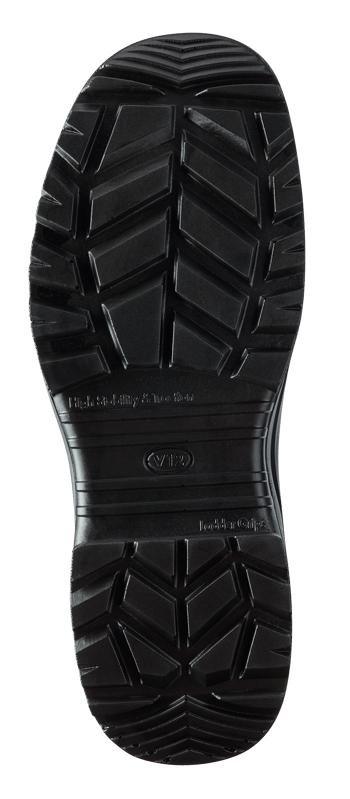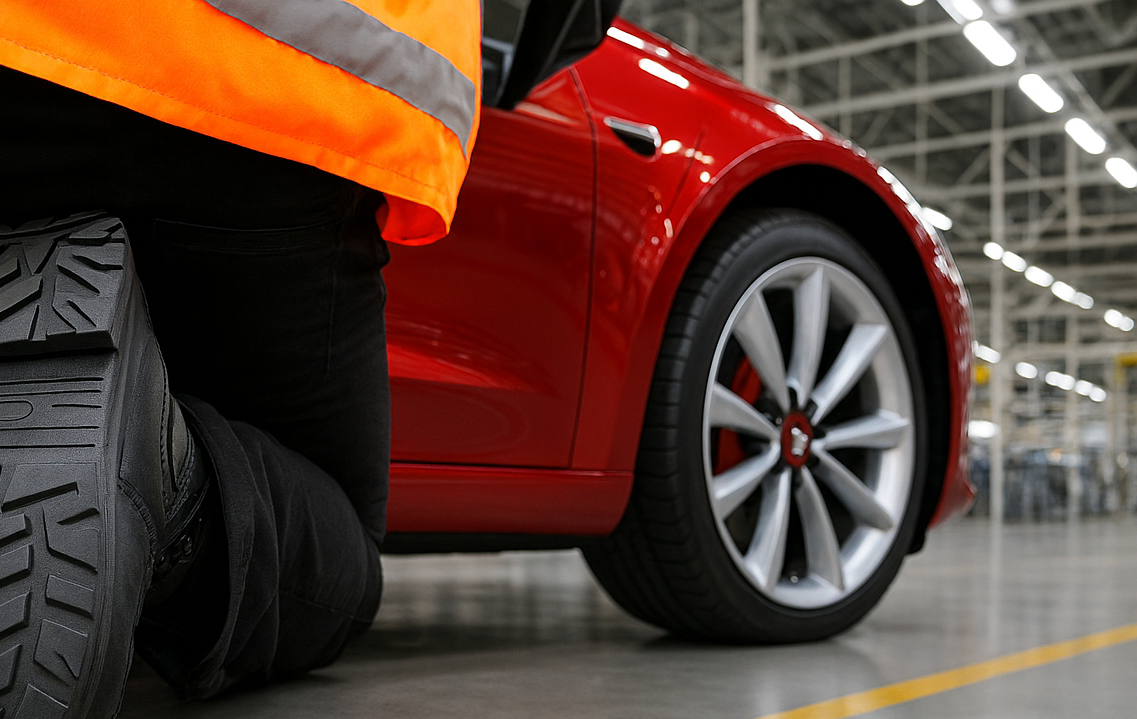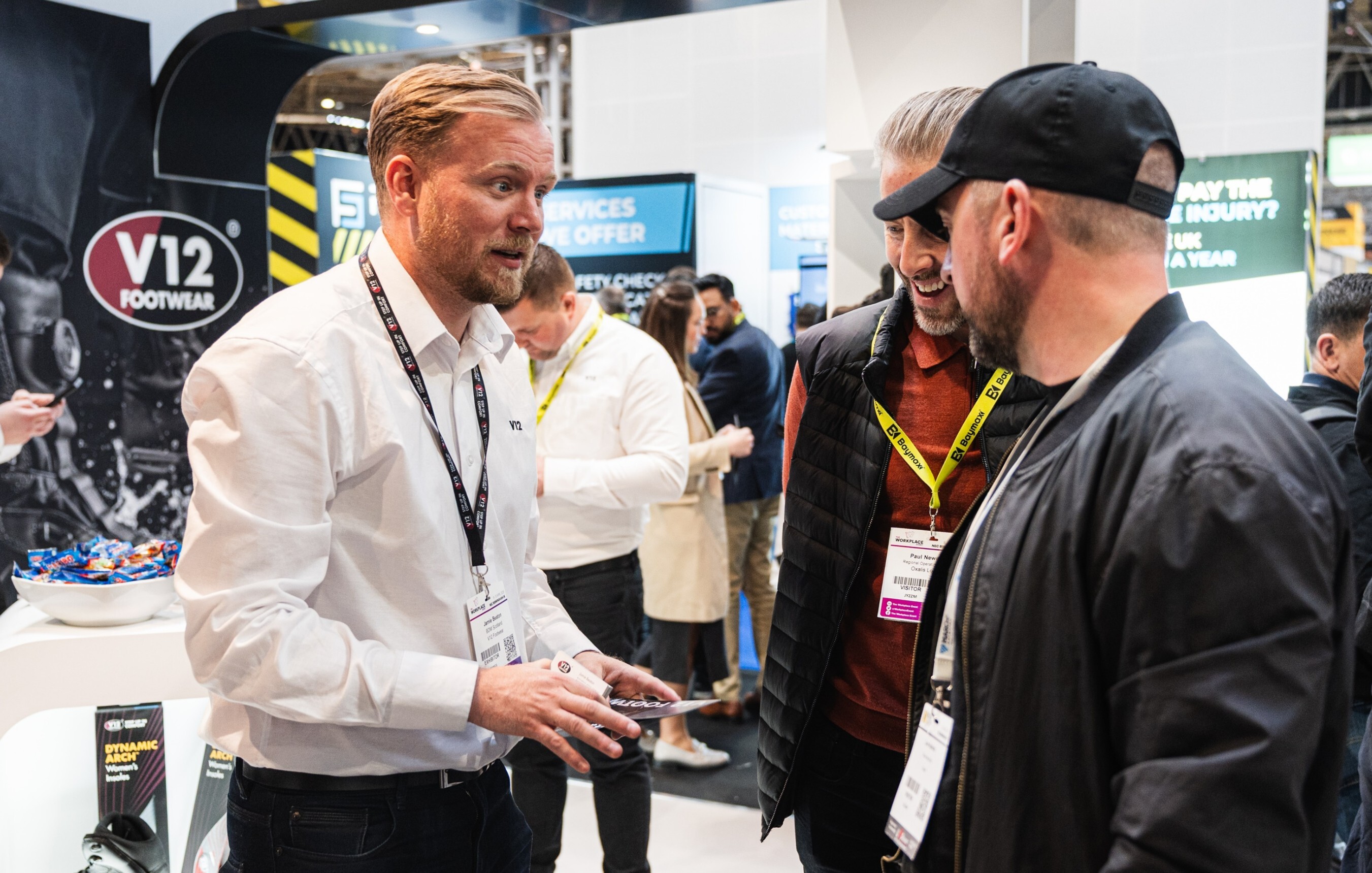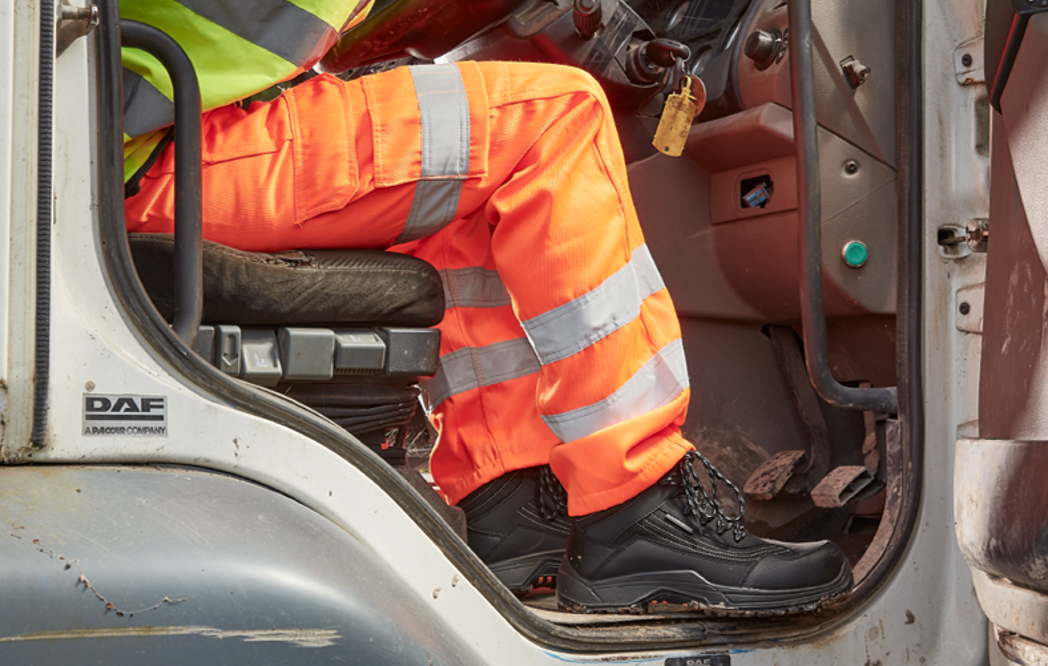According to the HSE:
- Slips, trips and falls are, on average, responsible for a third of all non-fatal injuries to employees reported by employers in Britain.
- Ninety-five per cent of major slips result in broken bones, requiring a minimum of six to eight weeks to heal.
- The cost to employers from lost production and other expenses due to slips has been estimated at £512 million every year.
If you’re in charge of Health and Safety at your organisation, you will be all too aware of the negative impact on health and productivity that slips have – and you’ll be equally aware that they are still happening far too frequently.
That’s why in this blog, we’ll be highlighting the different contaminant types that can cause slips in the workplace, and most importantly, explain the type of grip that can reduce these accidents.
Substance meets surface - what causes a slip?
When a surface, particularly if it’s smooth or man-made, becomes slick with a contaminant, it creates what’s known as ‘Boundary Lubrication,’ which is a layer sitting between the sole and the surface. This layer means no or only some of the boots’ tread is touching the ground. As a result, traction is lost and a slip occurs.

INDOOR CONTAMINANTS
Naturally, different industry roles and environments feature different contaminants and subsequent slip risks. Let’s look at some of the most hazardous, and in what industry or role they might be encountered.
WATER
 Water is a difficult hazard to control, as it's such a commonly encountered contaminant. But, in indoor work settings, a water spill or rain brought in from outside can actually be more dangerous than working around water outside. If the surface is rough, such as concrete, it will provide enough friction to prevent a slip, even if there is water on top. In internal workplace settings, floors will often be smooth, such as painted concrete or vinyl, and so slips on water occur more easily, as there is less friction.
Water is a difficult hazard to control, as it's such a commonly encountered contaminant. But, in indoor work settings, a water spill or rain brought in from outside can actually be more dangerous than working around water outside. If the surface is rough, such as concrete, it will provide enough friction to prevent a slip, even if there is water on top. In internal workplace settings, floors will often be smooth, such as painted concrete or vinyl, and so slips on water occur more easily, as there is less friction.
In the food and beverage industry where working around liquid is very much part of the role, it's unsurprising therefore that according to the HSE, slip injuries are more prevalent in this line of work than in most other sectors.
To reduce slips from water and other liquid contamination, often the key is not the sole material, but the sole pattern - which leads to the first of our grip tips:
Grip tip:
To enhance the safety of wearers if they’re working around water, ensure they have a sole designed with a water-dispersing tread. A great example of this is V12 Footwear’s Intelligent Grip SystemTM (IGS) sole unit (pictured above).
Its hexagonal grip pattern and water-dispersing micro channels cut through water and direct it away, ensuring wearers are always in contact with the ground and avoid slipping, even in the wettest conditions. Find out more about the IGSTM here.
Note: if your team work in a large factory floor or warehouse, the larger footfall can mean greater deposits of contaminants, so the size of department can often determine how stringent your safety footwear slip solution needs to be.
OIL
Oil is a notoriously slippery contaminant because it has a high viscosity level, which means that the molecules move very easily in relation to anything they touch. This makes any surface oil sits on very slippery.
![]()
Grip tip:
Smooth and generally man-made surfaces with little or no grip such as Kennedy Grating and Chequer plating which are contaminated with a particular substance can make an already slippery surface even more hazardous.
If your teams are working in an environment where oil is a risk, ensure you select footwear with a sole which has passed the SRC slip standard. For a boot to achieve this standard, it will have been tested on ceramic tiles covered in a diluted soap solution as well as on stainless steel with a glycerol covering. As a result, it is the highest grip standard a sole can achieve.
Safety standards including slip codes have changed – find out all of the new and forthcoming updates in this blog.
Did you know?
V12’s IGS sole has been specifically tested on Kennedy Grating and chequer plating, ensuring slips on these potentially slippery surfaces are greatly reduced. Find out more here.
Grease
 Rather like oil, grease decreases friction because it forms a thin layer between sole and surfaces. Because this means these two surfaces then lose contact, frictional force (grip) is lost.
Rather like oil, grease decreases friction because it forms a thin layer between sole and surfaces. Because this means these two surfaces then lose contact, frictional force (grip) is lost.
Many assume that substances such as grease are a contaminant exclusively found in food manufacturing due to their appearance in food preparation. And while this is certainly true - fats and oils in particular have a chemical composition that makes them very slippery - excess or leaked grease from equipment and plant can appear in a huge range of industrial settings. This can include Manufacturing and Maintenance roles to Engineering and Energy settings.
As a result, a high-performing grip on employees' boots is a must in this scenario. Remember, semi-solid lubricants like grease are used specifically to make components move and slide, which means leaked or residual grease is a significant slip hazard.
Sugar
In food and beverage environments, sugar can be a common ingredient. And while it might not seem like a contaminant with a high slip risk, its granular composition can increase slips by becoming a barrier between the surface and the wearer's grip.

Grip tip:
Sugar might tase sweet, but over time, it can have quite a corrosive effect on a boot's sole, so choosing a boot with a durable sole material such as PU will prevent it from degrading for longer.
OUTDOOR CONTAMINANTS
SAND
While it’s easy to assume that sand, like grit, might give slippery surfaces added traction, sand can actually contribute to a surface’s slipperiness, particularly if it’s on top of a smooth or man-made surface. Sand particles are small and granular, making them easy to spread across a floor surface. Also, as people continue to walk on sand, it can get ground down into a finer powder, creating a layer that decreases friction between footwear and floor to an even greater extent.

Grip tip:
A sole with large lugs will perform better on natural surfaces. Take V12’s STSTM (Stability Traction System) sole. Its large, rugged lug pattern provides backwards and forwards traction on loose surfaces, keeping the wearer stable and firm-footed.
MUD
Wet mud can be a slippery surface, but the real problem is the fact that it can clog up the channels in a boots’ tread. Once the tread in a sole is clogged up, the wearer essentially has a flat sole with no protruding grip to engage with the ground beneath, so avoiding this to stop slip accidents is key.

Grip tip:
A sole with wide tread channels will reduce this debris build-up. The STSTM sole unit (pictured) was designed for working on surfaces like mud and sand, as the material works its way out of the wide angled channels, instead of building up.
Slip Safety myths
Now you know some of the key contaminants in safety-critical industries and the best way to mitigate slips, let’s visit some common misconceptions on workplace slips so you know the pitfalls to avoid.
- 'Oil-resistant' does not mean 'slip-resistant' – the former term simply indicates the soles will not be damaged by oil.
- The term ‘contamination’ often conjures up images of corrosive or polluting substances, but in the slip world, this word refers to anything on a floor surface that can cause a slip.
- Cleaning agents are designed in part to remove slip risks such as water, grease and oil, but the wrong type of cleaning solution – particularly those high in alkaline - may actually cause slips by lowering the floor's friction, especially if there isn’t an adequate rinsing process at the end. Using non-alkaline cleaners that don’t contain animal fat emulsifiers might be a good way to reduce cleaning solution-related slips.
 We agree with the HSE recommendation to employers that they should ‘Trial footwear first to make sure it is suitable for the environment and for those who will be wearing it.’
We agree with the HSE recommendation to employers that they should ‘Trial footwear first to make sure it is suitable for the environment and for those who will be wearing it.’
It's important to avoid getting work boots ‘off the shelf’ without the knowledge and evidence that they have the correct grip to keep workers slip-free. This is where V12 can help.
We offer our Foot Health and Safety Assessment, a three-part footwear suitability process where we guide you to the best safety footwear for your employees including slip-resistance to optimise compliance and maximise safety. This no-obligation assessment includes our:
- industry-leading audit
- multi-step safety footwear trial
- safety footwear recommendation based on our expertise and knowledge
If you’re in charge of your company’s Health and Safety, you’ll want to ensure slips are at an absolute minimum. Click below and see how we can help.

.png)



